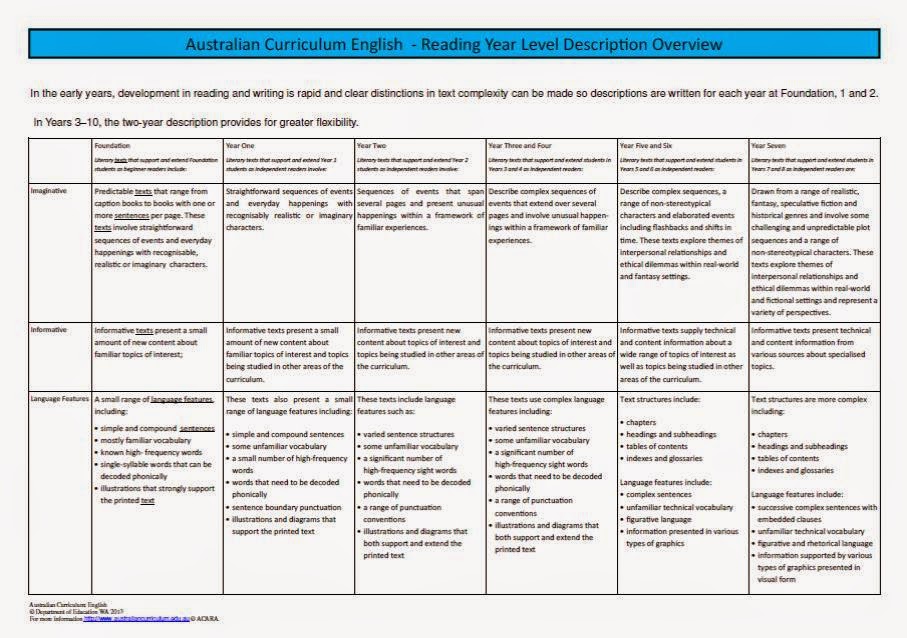Soooooooooooo to that end - WHY do we have a "national" curriculum? Wellllllllll it all began, (in very simple terms), with a meeting of Education Ministers in Melbourne where the development of the Melbourne Declaration in 2008 occured. If you have not engaged with this document, I would encourage you and your teams to do so as it sets out the background for WHY we have a "national" curriculum and WHAT is is trying to achieve. Talk about engaging a moral purpose! I have attached a link below for you to download the Melbourne Declaration of 2008.
From this declaration, a national curriculum was devised as part of the "call to action".
On 31 July 2014, ACARA tweeted a photo from their Twitter account, @ACARAeduau, with the statement, "Some reflections aligned to our mission, which is to improve learning outcomes for all young Australians".
Here is the graphic, (click to enlarge):
By the way, you can also follow Woodlands on Twitter @WoodlandsTDS !
Something else of interest might be that the Cross Curriculum Priorities are not a mandated part of AC! This is because they were selected as CURRENT priorities for young Australians BUT these priorities might change in the future if the goals change nationally! I did not know this until I heard ACARA reps speak at the WAPPA Conference in Perth this year.
I hope you found this information of interest and use.
Kind regards
Carlene Thorpe
Teacher Development School Coordinator
Woodlands Primary School




.JPG)